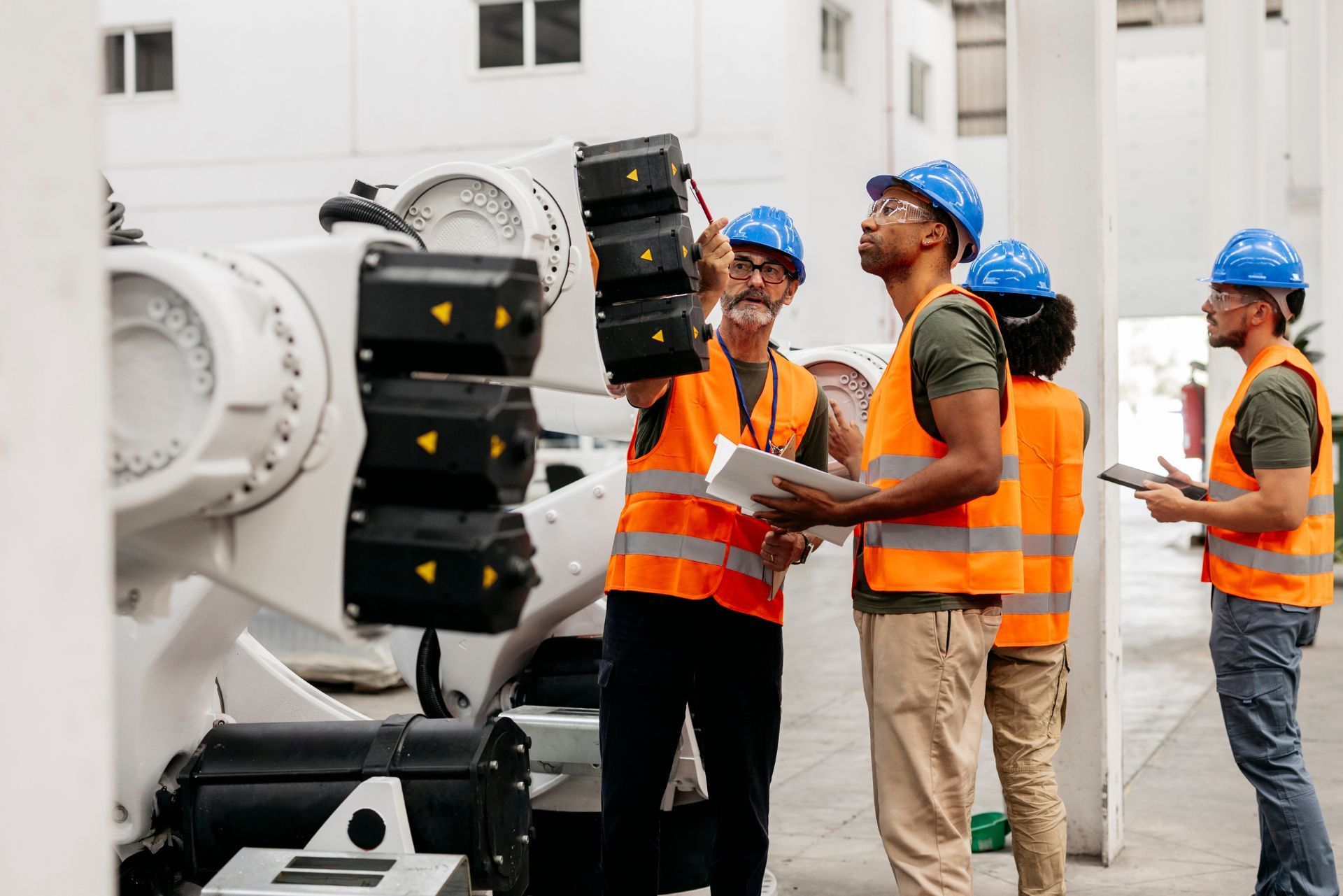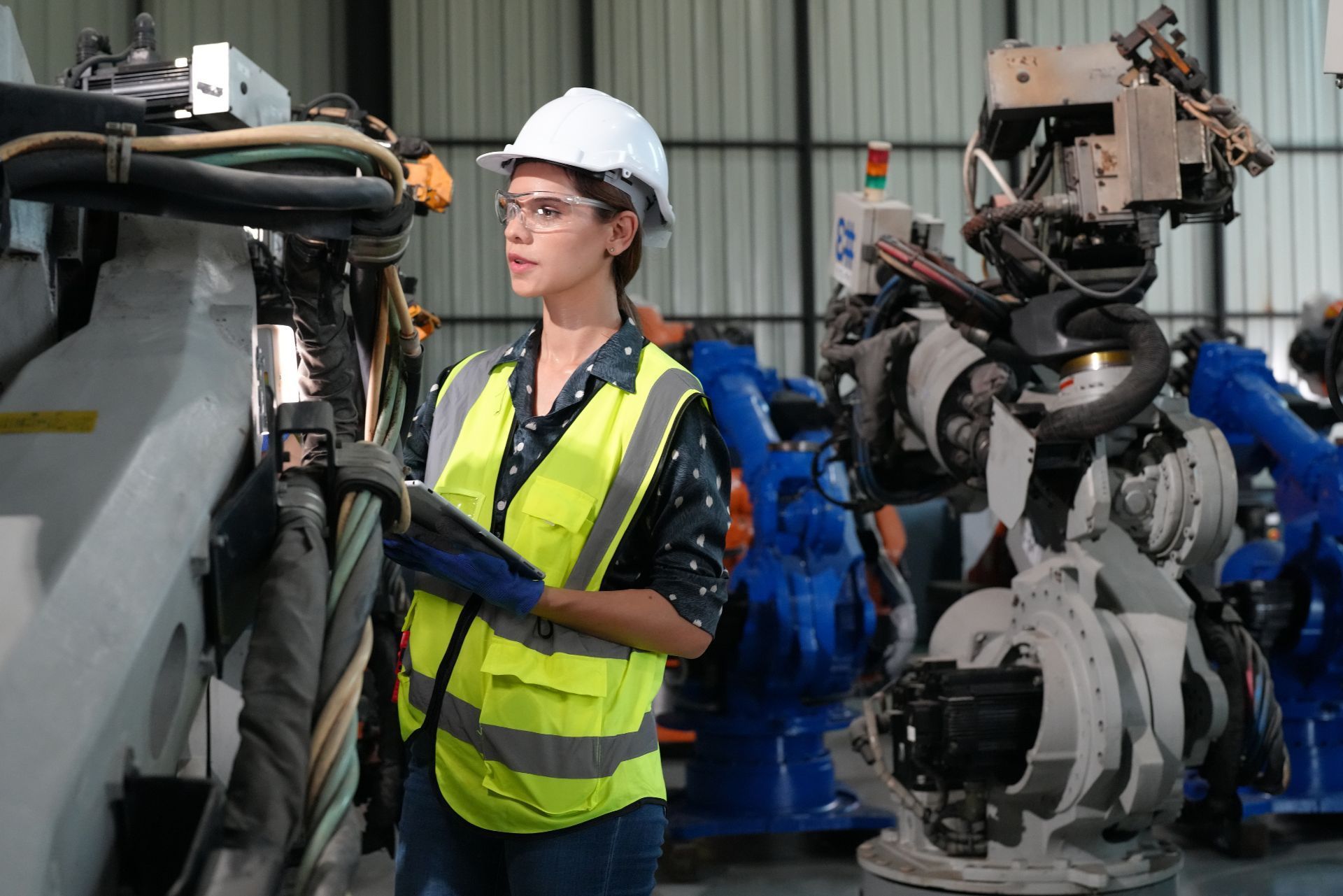Top 3 Recommended Policies

In the world of business, equipment plays a crucial role in daily operations. Whether it's manufacturing machinery, HVAC systems, or office equipment, the functionality of these assets is vital. However, unexpected breakdowns can lead to significant financial losses. This is where Pennsylvania equipment breakdown insurance comes into play. This article delves into the essentials of this type of insurance, its benefits, coverage details, and considerations for business owners.
Understanding Equipment Breakdown Insurance
Equipment breakdown insurance is designed to cover the costs associated with the repair or replacement of damaged equipment. Unlike standard property insurance, which may not cover mechanical failures, this specialized insurance provides a safety net for businesses that rely heavily on machinery and technology. In an increasingly competitive market, having this type of insurance can be a strategic advantage, ensuring that unforeseen equipment failures do not derail a company's productivity or financial stability.
What Does Equipment Breakdown Insurance Cover?
The coverage typically includes repairs or replacements for equipment that has suffered a mechanical failure or electrical breakdown. This can encompass a wide range of equipment, including:
- Manufacturing machinery
- Heating, ventilation, and air conditioning (HVAC) systems
- Boilers and pressure vessels
- Electrical systems
- Office equipment such as computers and printers
In addition to repair costs, many policies also cover business interruption losses resulting from equipment failures. This means that if a breakdown halts operations, the insurance can help compensate for lost income during the downtime. Furthermore, some policies may extend to cover additional expenses, such as the costs of renting replacement equipment or hiring temporary staff to maintain productivity levels while repairs are underway.
Why Is Equipment Breakdown Insurance Important?
For many businesses, equipment is not just a tool; it is the backbone of operations. A breakdown can lead to significant delays, lost revenue, and increased operational costs. Here are a few reasons why this insurance is essential:
- Financial Protection: It shields businesses from the high costs associated with repairs and replacements.
- Minimizes Downtime: Quick repairs can help get operations back on track, reducing the impact of lost productivity.
- Peace of Mind: Knowing that equipment failures are covered allows business owners to focus on growth rather than worrying about potential losses.
Moreover, equipment breakdown insurance can also foster a proactive approach to maintenance. With the knowledge that repairs are covered, businesses may be more inclined to invest in regular maintenance and inspections, which can help prevent breakdowns before they occur. This preventative mindset not only extends the life of the equipment but also contributes to a more efficient and reliable operation overall. Additionally, some insurers may offer resources or partnerships with maintenance providers, further enhancing the value of the insurance policy.

Types of Equipment Breakdown Insurance Policies
In Pennsylvania, businesses can choose from various types of equipment breakdown insurance policies. Understanding the differences can help in selecting the right coverage for specific needs.
Comprehensive Coverage
This type of policy provides extensive coverage for a wide range of equipment and potential breakdown scenarios. It typically includes:
- Mechanical breakdowns
- Electrical failures
- Operator error
Comprehensive coverage is ideal for businesses that rely heavily on multiple types of equipment, as it offers broad protection against various risks. In addition to the standard protections, many comprehensive policies also offer coverage for consequential losses, which are indirect losses that can occur as a result of equipment failure. For instance, if a critical piece of machinery breaks down and causes production delays, the financial impact can be significant. Comprehensive coverage can help mitigate these losses, ensuring that businesses can recover more swiftly and efficiently.
Named Perils Coverage
Unlike comprehensive policies, named perils coverage only protects against specific risks that are explicitly listed in the policy. Common named perils include:
- Fire
- Explosion
- Water damage
This type of policy may be more affordable but could leave businesses vulnerable to unlisted risks, making it essential to carefully consider the potential gaps in coverage. Additionally, businesses should conduct a thorough risk assessment to identify which perils are most likely to impact their operations. By understanding their unique vulnerabilities, business owners can make informed decisions about whether named perils coverage is sufficient or if they need to invest in a more comprehensive policy to safeguard their assets effectively.
Business Interruption Insurance
Business interruption insurance is often included as part of equipment breakdown policies. It covers the loss of income that a business suffers after a covered event, such as a breakdown. This coverage is crucial for maintaining cash flow during repairs and ensuring that a business can continue to meet its financial obligations. Furthermore, business interruption insurance can also cover operating expenses, such as rent and utilities, during the downtime. This means that even while the business is not generating revenue, it can still manage its fixed costs, helping to prevent financial strain. In today's fast-paced market, where every moment of downtime can lead to lost customers and revenue, having robust business interruption coverage is a key component of a comprehensive risk management strategy.
Factors Influencing Equipment Breakdown Insurance Premiums
Several factors can influence the cost of equipment breakdown insurance premiums in Pennsylvania. Understanding these can help businesses make informed decisions when purchasing coverage.
Type of Equipment
The type and value of the equipment being insured play a significant role in determining premiums. High-value machinery or specialized equipment may result in higher premiums due to the increased risk and potential repair costs. For example, a state-of-the-art CNC machine used in precision manufacturing may have a much higher premium compared to standard office equipment like computers or printers. Additionally, equipment that is subject to rapid technological advancements may also face fluctuating premiums as its market value changes over time, necessitating regular assessments and adjustments to coverage.
Industry Risk
Different industries carry varying levels of risk. For instance, manufacturing industries may face higher premiums due to the likelihood of machinery breakdowns compared to office-based businesses. Insurers assess the overall risk profile of the industry when calculating premiums. Industries such as construction or food processing may encounter unique hazards, such as environmental factors or operational stresses, which can further elevate the risk. Furthermore, businesses that implement rigorous maintenance schedules and safety protocols may be viewed more favorably by insurers, potentially leading to lower premiums despite operating in a high-risk sector.
Claims History
A business's claims history can also impact insurance premiums. Companies with a history of frequent claims may face higher rates, while those with a clean record may benefit from lower premiums. Insurers often analyze not just the frequency but also the severity of past claims. A single catastrophic failure resulting in significant losses can have a more detrimental effect on premiums than multiple minor claims. Additionally, businesses that proactively invest in risk management strategies, such as regular equipment inspections and employee training programs, may demonstrate to insurers that they are less likely to experience future breakdowns, thereby securing more favorable premium rates.
How to Choose the Right Equipment Breakdown Insurance
Selecting the right equipment breakdown insurance requires careful consideration of various factors. Here are some steps to guide business owners in making the best choice.
Assess Your Equipment Needs
Begin by conducting a thorough assessment of all equipment used in business operations. Identify which pieces of equipment are critical to operations and their potential risks. This will help in determining the necessary coverage levels. For instance, if your business relies heavily on manufacturing machinery, consider the potential downtime and repair costs associated with such equipment. Additionally, evaluate the age and condition of your equipment, as older machines may be more prone to breakdowns and could require more comprehensive coverage.
Compare Policies
Once the equipment needs are identified, compare different insurance policies from various providers. Look for key features such as:
- Coverage limits
- Exclusions
- Deductibles
Understanding these aspects will help in selecting a policy that offers the best protection for the business. It's also wise to consider the insurer's reputation and claims process. Research customer reviews and ratings to gauge how efficiently a provider handles claims, as this can significantly impact your business during a crisis. Furthermore, inquire about any additional services offered, such as risk management consultations or maintenance programs, which can further safeguard your equipment and reduce the likelihood of future breakdowns.
Consult with an Insurance Agent
Working with an insurance agent who specializes in commercial coverage can provide valuable insights. They can help navigate the complexities of different policies and tailor coverage to meet specific business needs. An experienced agent will not only assist in identifying the most suitable options but can also offer advice on industry trends and emerging risks that may affect your equipment. This proactive approach can lead to more informed decisions, ensuring that your business remains resilient in the face of unexpected equipment failures. Additionally, they can help you understand the nuances of policy language, ensuring that you are fully aware of what is covered and what is not, which is crucial for avoiding unpleasant surprises during the claims process.

Common Exclusions in Equipment Breakdown Insurance
While equipment breakdown insurance offers extensive coverage, there are common exclusions that business owners should be aware of. Understanding these exclusions can prevent surprises during the claims process.
Wear and Tear
Most policies do not cover damages resulting from normal wear and tear. Equipment naturally deteriorates over time, and insurers typically expect businesses to maintain their machinery adequately. This means that regular inspections and timely replacements of parts are essential for ensuring that equipment remains in optimal working condition. For instance, a manufacturing facility may need to replace belts, bearings, or filters at regular intervals to prevent breakdowns that could lead to costly downtime.
Negligence
Claims arising from negligence or improper maintenance may also be excluded. It is crucial for businesses to follow manufacturer guidelines and conduct regular maintenance to avoid complications during claims. Failure to document maintenance schedules or neglecting routine checks can jeopardize a business's ability to receive compensation for damages. For example, if a restaurant's refrigeration unit fails due to a lack of proper cleaning and servicing, the insurance provider may deny the claim, citing negligence as the reason.
Intentional Damage
Any damages caused intentionally or through illegal activities will not be covered. This exclusion is standard across most insurance policies and emphasizes the importance of responsible equipment use. Additionally, businesses must be vigilant about employee conduct, as any intentional acts of sabotage or misuse of equipment can lead to significant financial losses. Insurers may also investigate claims to ensure that no fraudulent activity is involved, which can further complicate the claims process and result in legal repercussions for the business.
Environmental Factors
Another common exclusion in equipment breakdown insurance is damage caused by environmental factors, such as floods, earthquakes, or extreme weather conditions. While some businesses may assume that their equipment is protected against all forms of damage, insurers often categorize these events as acts of God, which are not covered under standard policies. Businesses located in areas prone to natural disasters should consider additional coverage options or specialized policies that address these risks, ensuring that they are adequately protected against unexpected environmental threats.
Obsolete Equipment
Coverage for obsolete equipment is also typically excluded from equipment breakdown insurance policies. As technology advances, older machinery may no longer meet safety or efficiency standards, and insurers may refuse to cover breakdowns associated with such equipment. Businesses should regularly assess their equipment inventory and consider upgrading to newer models that comply with current regulations and standards. This proactive approach not only helps in maintaining operational efficiency but also ensures that businesses remain eligible for insurance coverage in the event of a breakdown.
Filing a Claim for Equipment Breakdown Insurance
When an equipment breakdown occurs, knowing how to file a claim is essential for minimizing downtime and financial losses. Here’s a step-by-step guide on the claims process.
Notify Your Insurer
The first step in the claims process is to promptly notify the insurance company. Most policies require notification within a specific timeframe, so it’s crucial to act quickly.
Document the Damage
Gather all relevant documentation related to the equipment breakdown. This includes:
- Photos of the damaged equipment
- Repair estimates
- Maintenance records
Thorough documentation can support the claim and expedite the process.
Follow Up on the Claim
After submitting the claim, maintain communication with the insurer. Follow up regularly to check on the status and provide any additional information they may require. This proactive approach can help ensure a smoother claims experience.
Cost Considerations for Equipment Breakdown Insurance
Understanding the costs associated with equipment breakdown insurance is crucial for budgeting purposes. Several factors influence the overall cost of premiums.
Premium Costs
Premiums can vary widely based on the factors previously discussed, including equipment type, industry risk, and claims history. Businesses should expect to pay a percentage of the total insured value as their premium.
Deductibles
Most policies come with a deductible that the business must pay before the insurance kicks in. Higher deductibles typically result in lower premiums, but businesses should balance this with their ability to cover potential out-of-pocket costs.
Additional Coverage Options
Businesses may also consider additional coverage options, such as business interruption insurance or extended warranties on specific equipment. While these options can increase premiums, they may provide valuable protection against unforeseen circumstances.
Conclusion
Pennsylvania equipment breakdown insurance is a vital component of risk management for businesses that rely on machinery and technology. By understanding the coverage options, costs, and claims process, business owners can make informed decisions that protect their assets and ensure continuity in operations.
Investing in the right equipment breakdown insurance not only safeguards against financial losses but also provides peace of mind, allowing businesses to focus on growth and success. As with any insurance policy, it is essential to review coverage regularly and adjust as needed to keep pace with changes in operations and equipment.
Contact Us

